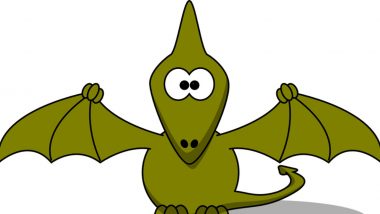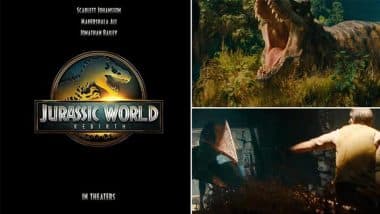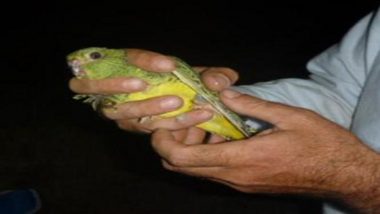Scientists have discovered a new species of two-fingered dinosaur that resembled a giant parrot. Skeleton of the new species were unearthed in Mongolia's Gobi Desert by a University of Edinburgh-led team. The creatures lived more than 68 million years ago and have been named Oksoko avarsan. They grew to around two metres long with only two functional digits on each forearm. Researchers suggest that their forelimb adaption must have been a part of the dino-evolution. According to researchers, these omnivorous creatures had feathers that could grow up to two metres long. They had a large, toothless beak which is quite similar to the parrots of today. The study suggests that the forelimb adaption must have been a part of the dino-evolution. The adaption could be because of the change in lifestyle and diet that helped them multiply and diversify. Real Dinosaur Cloned in China? Know More About Viral Video of Scary Looking Prehistoric Creature From Jurassic World's Exhibition.
The study was led by Dr Gregory Funston from the School of Geosciences, The University of Edinburgh. He was quoted as saying, "Oksoko avarsan is interesting because the skeletons are very complete and the way they were preserved resting together shows that juveniles roamed together in groups. But more importantly, its two-fingered hand prompted us to look at the way the hand and forelimb changed throughout the evolution of oviraptors, which hadn't been studied before." Find Real Dinosaur Fossils At These 5 Places Around The World.
Know More About Dinosaur Parrots!
He added that their two-digit hand let them explore how forelimbs, especially hand, must have adapted during the evolution of oviraptors. Dr Gregory added, "But more importantly, its two-fingered hand prompted us to look at the way the hand and forelimb changed throughout the evolution of oviraptors, which hadn't been studied before." Their arms had drastically changed with migrations to new geographic areas, specifically to what is now North America and the Gobi Desert. He said, "Oviraptorosaurs were highly adaptable, which may have enabled them to diversify the end of the Cretaceous." Giant 120-Million-Year Old Crocodile That Walked on Two Feet Like a Dinosaur Found by Scientists in South Korea.
These animals were quite diverse before dinosaurs were eliminated from the Earth. The dinosaur’s arm adaptations changed in relation to the migration of its species to current North America and Gobi Desert. The well-preserved fossils provided the first evidence of digit loss in the family of dinosaurs known as oviraptors. The study was published in the journal Royal Society Open Science funded by The Royal Society and the Natural Sciences and Engineering Council of Canada.
(The above story first appeared on LatestLY on Oct 08, 2020 11:17 AM IST. For more news and updates on politics, world, sports, entertainment and lifestyle, log on to our website latestly.com).













 Quickly
Quickly




















